Pane di Pasqua, also known as Italian Easter Bread, is a fluffy braided bread made with sweet yeast dough traditionally made at Easter time. This authentic recipe yields three beautiful loaves that are perfect for sharing with family and friends.

Are you looking to bake a traditional recipe for sweet Italian Easter bread?
If you are, this is for you!
Today, I’m sharing an authentic Italian recipe for pane di pasqua, which means Easter bread in Italian. It is a beautiful braided yeast bread that’s lightly sweetened.
It’s often shaped into a circle with colored eggs nestled in the dough, adding a festive touch.
I love shaping mine into a loaf without the eggs. As you can see from the above photo, it is just as stunning with a beautiful golden crust, but so much easier to make.
My authentic recipe uses mashed potatoes and oil instead of butter. Just like my recipe for Italian fried dough, this Easter bread gets its fluffy texture from Russet potatoes.
If you have never tried making yeast bread before, don’t worry.
There was a time when I was absolutely apprehensive about using yeast. I had this preconceived idea that only professional bakers had the magical ability to decipher when the first rising was complete.
I’m here to tell you that making this Italian sweet bread is not only simple, but the procedure is very straightforward.
I can confidently tell you that you’ll feel as though every effort has been worth it after you make this amazing Easter bread recipe.
This recipe yields three braided loaves of yeast bread, one to enjoy immediately and two to share with friends or to freeze for later.
I will walk you through every step of the process so that you can make three delicious loaves of your own!
Jump to:
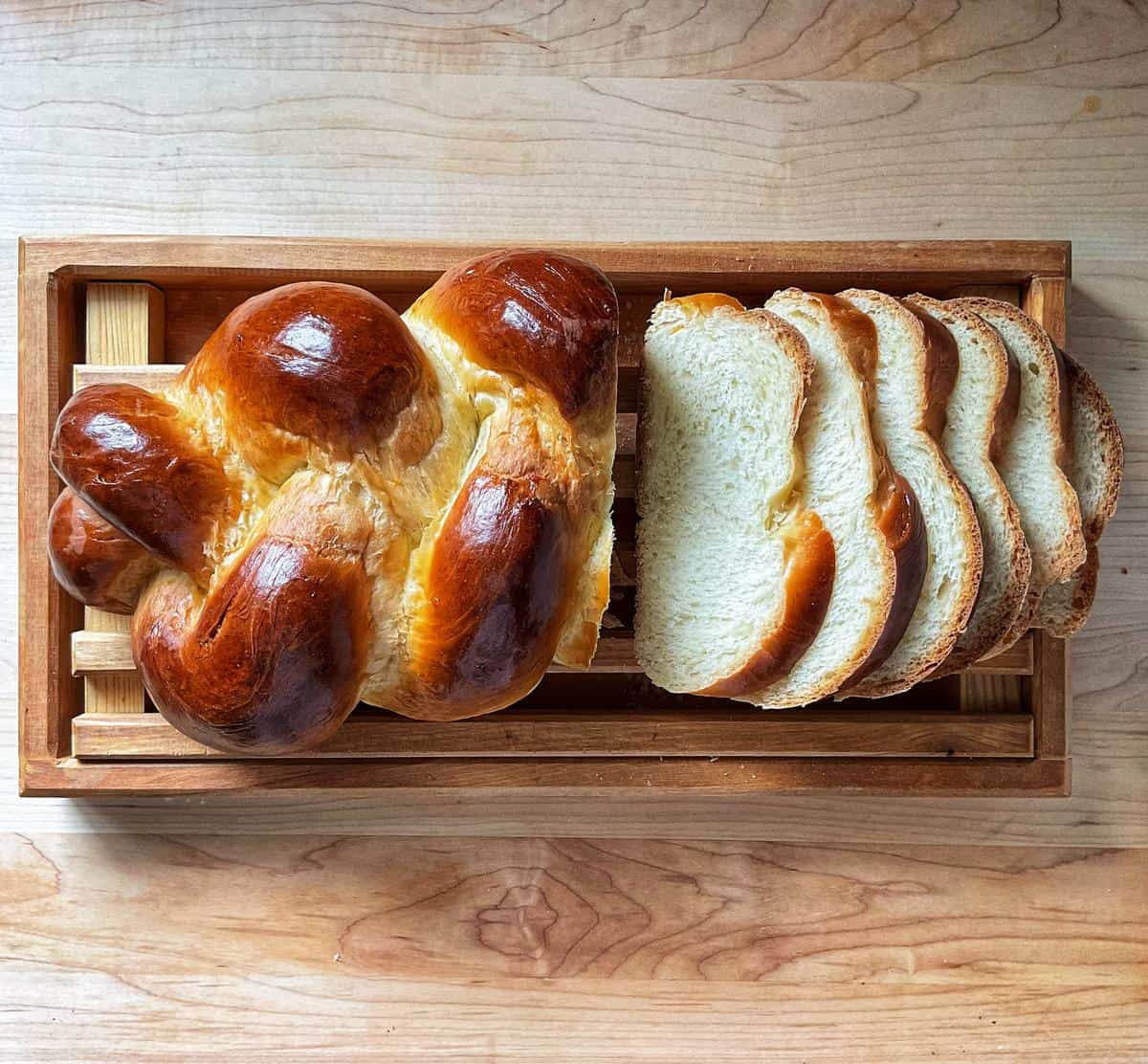
Prep and Bake Time
Preparing and baking traditional Italian Easter bread involves several stages, including mixing, kneading, rising, and baking. Here’s a breakdown of the time commitment:
- Preparation Time: Approximately 45 minutes.
- First Rise: About 1 hour, or until the bread dough doubles in size.
- Rest Period: An additional 30 minutes after deflating the dough.
- Shaping and Second Rise: Approximately 1 hour, including shaping the bread dough into braids and allowing it to rise until nearly doubled.
- Baking Time: 45-50 minutes, or until the loaves achieve a deep golden brown color.
Total Time: Approximately 4 hours, largely dependent on rising times and individual kitchen conditions.
Watch the video on the recipe card to see how to braid this pane di pasqua recipe.
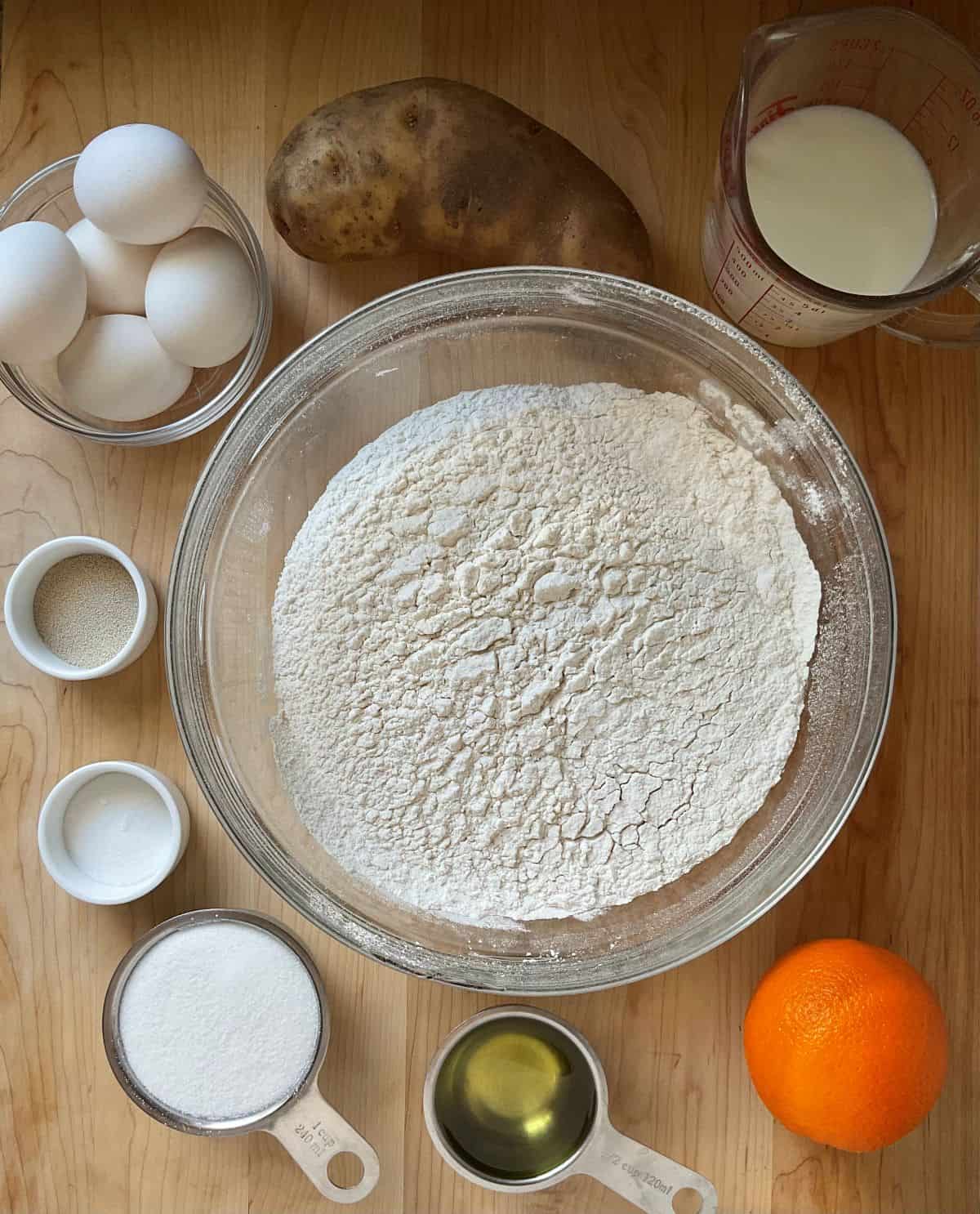
Let’s Prep our Recipe
A few ingredients need to be prepared before we can start.
Boil the potatoes: First, you’ll need to boil 2 medium (or 1 large) russet potatoes for about 15 minutes or until they are fork-tender. You need about 200 grams of riced potatoes. If you do not have a scale, this is about 1½ cups. If you do not have a potato ricer, you can use the large holes of a box grater or mash lightly with a fork. Be careful not to overmanipulate.
Room temperature eggs: Simply remove 5 eggs from the refrigerator and set them on the counter. Allow them to come to room temperature for about 30 minutes.
Warm the milk: Place 1 cup of milk (2% or whole) in a small saucepan over medium heat and warm until it is lukewarm, about 105°F (41°C). Do not let it get any hotter than that, or you risk deactivating the yeast.
Dissolve the yeast: In a small bowl, combine 1 cup of lukewarm milk with 1 tablespoon of granulated sugar and 8 grams (2¼ teaspoons) of active dry yeast.
Stir gently until the yeast is completely dissolved and set it aside for about 10-15 minutes to allow the mixture to become frothy.
NOTE: If you do not see any foam after 10 minutes, your yeast is likely inactive and you’ll need to start over with fresh yeast.
Make the orange sugar: Combine 1 cup of granulated sugar and the zest of one orange in a small bowl. Using your fingertips, rub them together in a circular motion for a couple of minutes. Notice how the sugar undergoes a color and aroma change as it absorbs the oils from the orange. Set aside for now.
Sift the flour: Sift 1kg of all-purpose flour in a large bowl. If you do not have a scale, this is about 7 cups of flour. To properly weigh flour, fluff, then scoop and level it off with the back of a knife.
Prepare the simple egg wash: Whisk together one whole egg with a tablespoon of milk in a small bowl. Set this aside until you are ready to use it.
Assembling the Bread Dough
Now that we have all of our ingredients prepared, we can begin making the braided Italian Easter bread!
In a large mixing bowl of a stand mixer, whisk the eggs at medium speed until they are nice and frothy, about 3-4 minutes.
Gradually add 1 cup of orange sugar (refer to details in the previous section on preparing the ingredients). Whisk for another 3-4 minutes.
Whisk in ½ cup of oil and 1 teaspoon of pure vanilla extract on low speed.
In a small bowl, whisk together 200 grams of riced potatoes and the yeast mixture (refer to details in the previous section on preparing the ingredients). This will create a slurry.
With the mixer on low speed, slowly add the yeast slurry. Whisk together for one minute.
Kneading and Proofing the Dough
Now, with the mixer still on low speed, add about ⅓-½ of the sifted all-purpose flour (1 kg total). Whisk together for 1 minute.
Switch to the dough hook attachment. Add the rest of the flour and knead for 8-10 minutes until smooth and elastic. The bread dough should pull away from the sides of the bowl, but it should be sticking to the bottom.
To test the dough consistency, press your finger lightly into the dough. It should be soft and slightly tacky to the touch.
If it’s too sticky, add a little more flour (a tablespoon at a time) until you achieve the right consistency.

Place the dough in a lightly oiled bowl. Make sure to give the dough a good turn while coating it with oil. Cover the bowl with plastic wrap.
Allow the dough to rise in a warm place, draft-free, for about 1 hour or until double in size.
Tip: To assist the dough rise, I put it in my oven on the bread-proof setting.
After the first rise, gently deflate it by punching and pressing down. Cover and allow it to rest for an additional 30 minutes.
Meanwhile, line a large baking sheet with parchment paper. Set aside.
How to Braid the Dough
Press down on the dough once more to deflate it again.
Transfer the dough to a clean work surface and divide it into three equal parts using a kitchen scale.
Cover each ball of dough loosely with plastic wrap to prevent them from drying out.
Working with one ball of dough at a time, use a kitchen scale to divide it into three equal pieces. Cover loosely with plastic cling wrap.
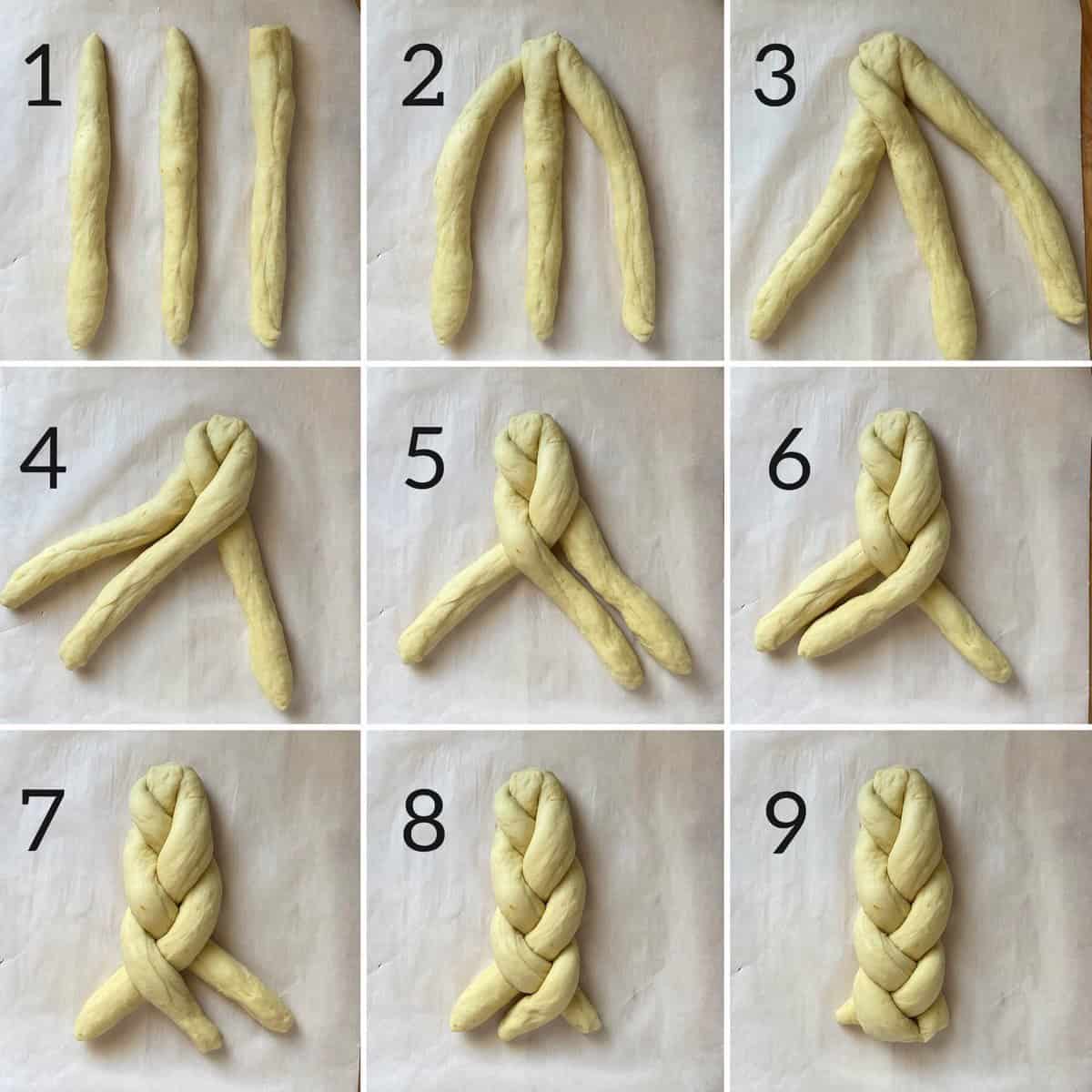
- Then, taking one piece at a time, knead it briefly for 15 seconds, then roll it out into a long rope that is about 10 inches long and 1½ inch thick. Make sure that the ropes are even in thickness so that they will braid evenly.
- Pinch together 3 strips of dough at the top end.
- Begin braiding by bringing the left strip of dough over the middle strip.
- Then, bring the right strip of dough to the middle.
- Repeat again -left then right.
- Braid the three ropes together by intertwining one over the other two.
- Repeat again -left then right.
- You are almost done! One more time.
- Pinch the ends together. Tuck the end underneath and pinch it to secure.
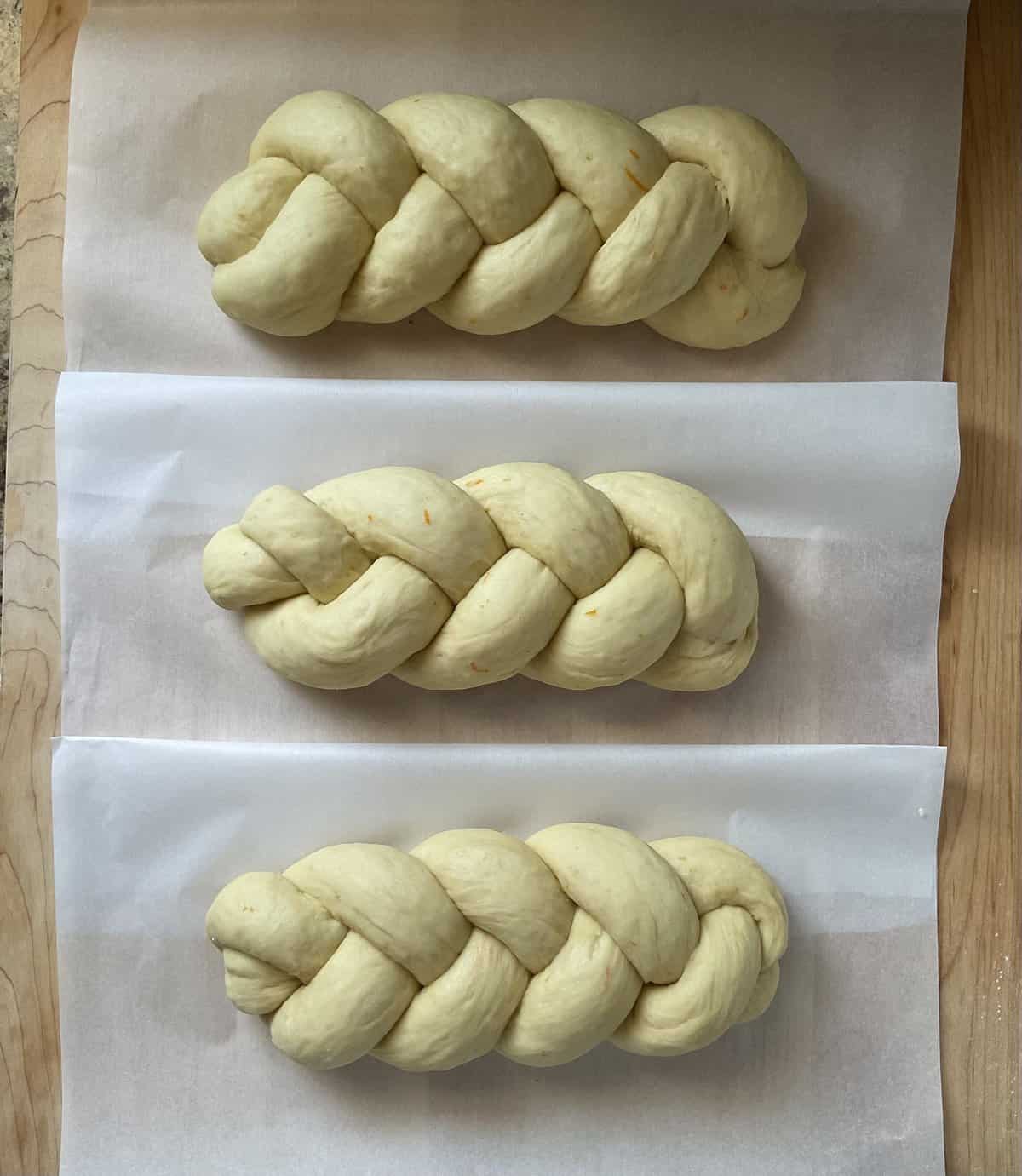
Transfer to a parchment-lined baking sheet. Cover loosely with plastic film.
Repeat braiding with the other two balls of dough.
Cover with a clean kitchen towel and let rise until almost double in size, 45 minutes. The dough should spring back lightly if you poke it with your knuckles.
Baking the Bread
Adjust the oven rack to the middle position and preheat the oven to 350 °F (180 °C).
When the dough is ready, brush the entire surface lightly with the egg wash (1 large egg beaten with 1 tablespoon of milk) using a pastry brush. This will give the bread a nice, glossy finish.
Bake for 45-50 minutes or until deep golden brown.
Depending on your oven, you might want to place a sheet of aluminum paper loosely over the loaves, to prevent them from over-browning.
The bread should sound hollow when tapped on the bottom. Remove them from the oven and let them cool completely on a wire rack before slicing and serving.
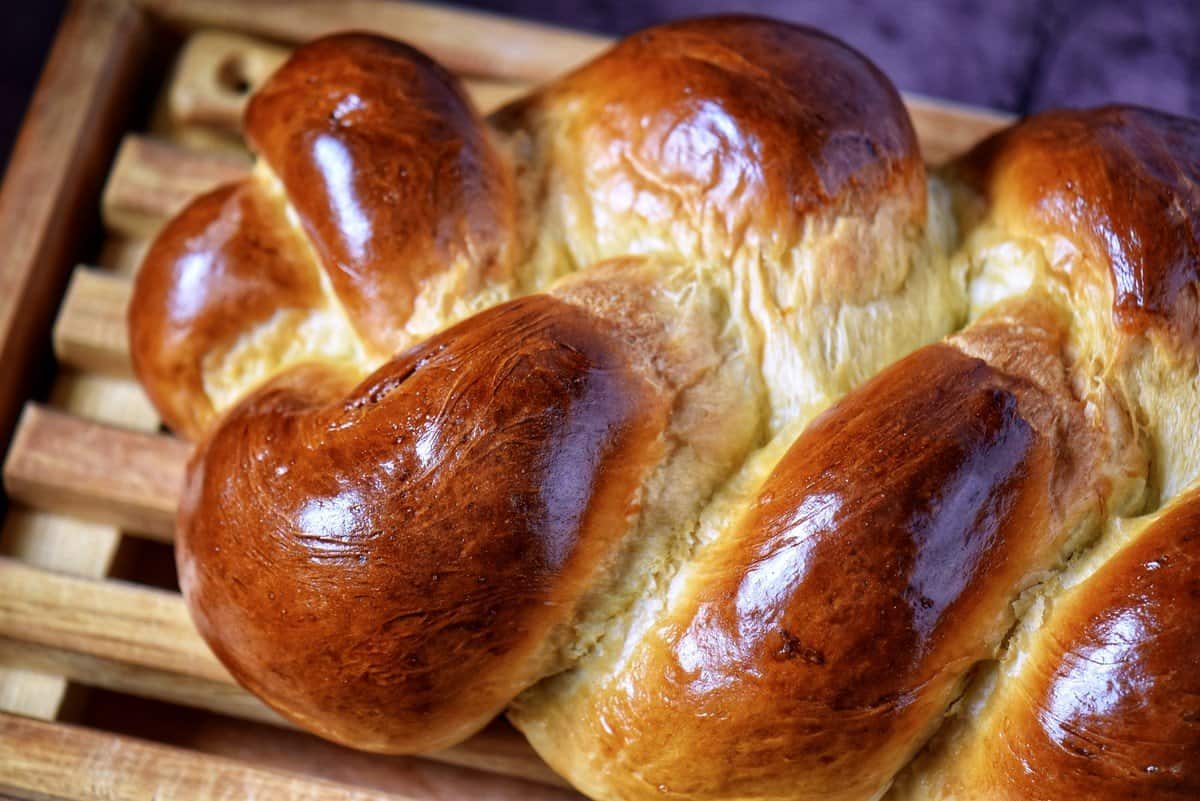
Braided Easter Bread Variations
While this recipe yields a traditional Italian Easter bread, there are a number of ways that you can vary it:
- Instead of braiding the dough, form it into six round loaves.
- Replace the orange zest with lemon zest.
- To take it a step further, try adding different flavor profiles to the dough. Nuts and raisins are two popular additions.
- Instead of or in addition to vanilla extract, use almond and/or anise extracts.
- For a non-traditional look top the bread with poppy seeds, pearled sugar or colorful sprinkles before baking.
- Omit the egg wash and instead brush the bread with warm milk or water. It will still achieve a golden look but without the sheen.
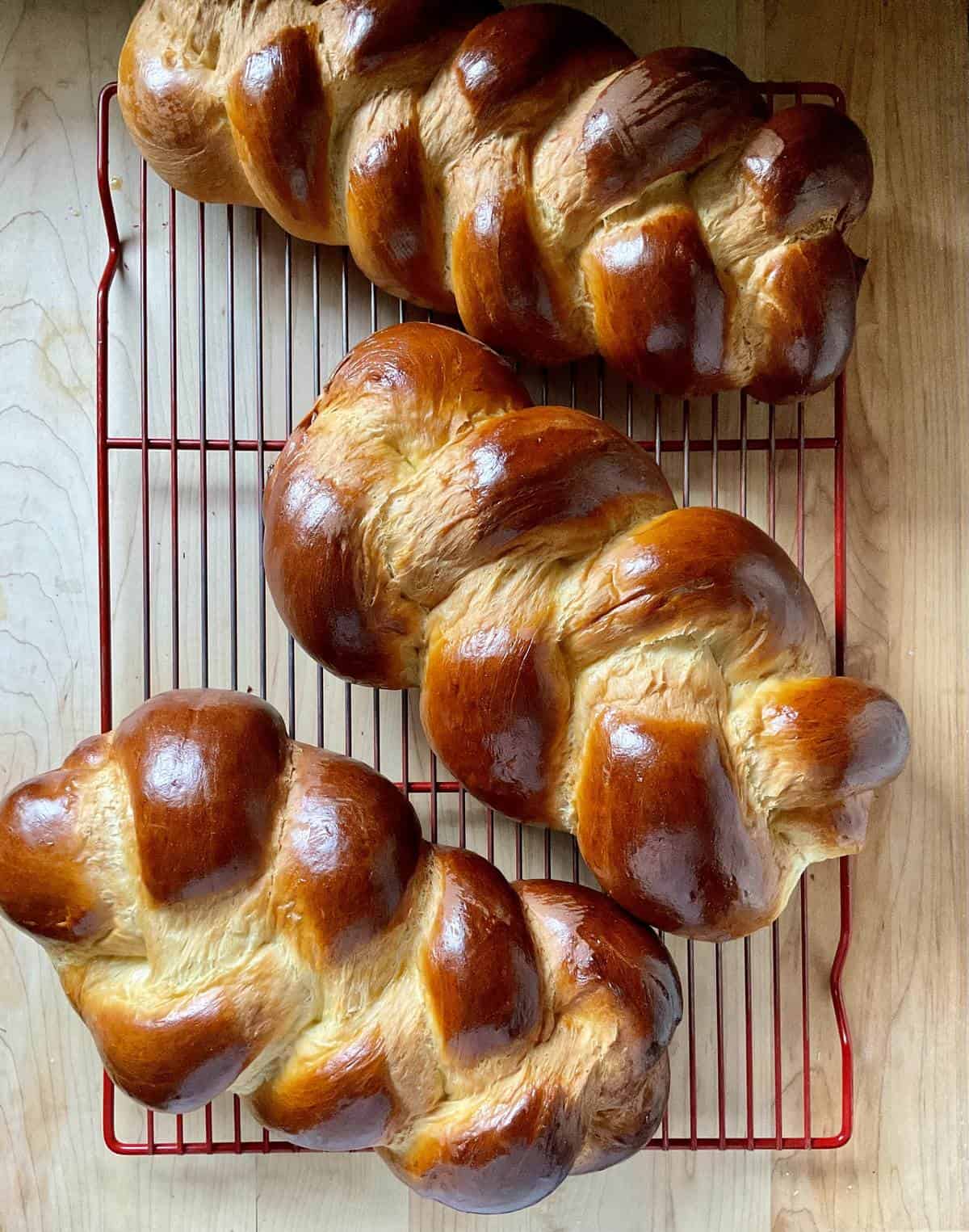
Tips
- Check the expiration date on the yeast and test it to see if it’s still viable.
- Have the eggs at room temperature for simpler mixing. This includes the egg used for the egg wash.
- Use russet potatoes because they have a high starch content and yield a fluffy texture in the bread.
- The most precise technique to measure flour is by weight. If you don’t have a kitchen scale, fluff your flour and then scoop it using a dry measuring cup and level it off with the back of a knife. For reference, 1 cup of all-purpose flour = 142 grams [source].
- There’s no need to flour your wooden board since you want the dough to adhere to it while rolling and shaping the logs. You can prevent the soft dough from sticking to your hands by dusting your palms with flour.
- This sweet braided Easter bread is best if served the same day they are made. As with most sweet yeast bread, they dry out quickly.
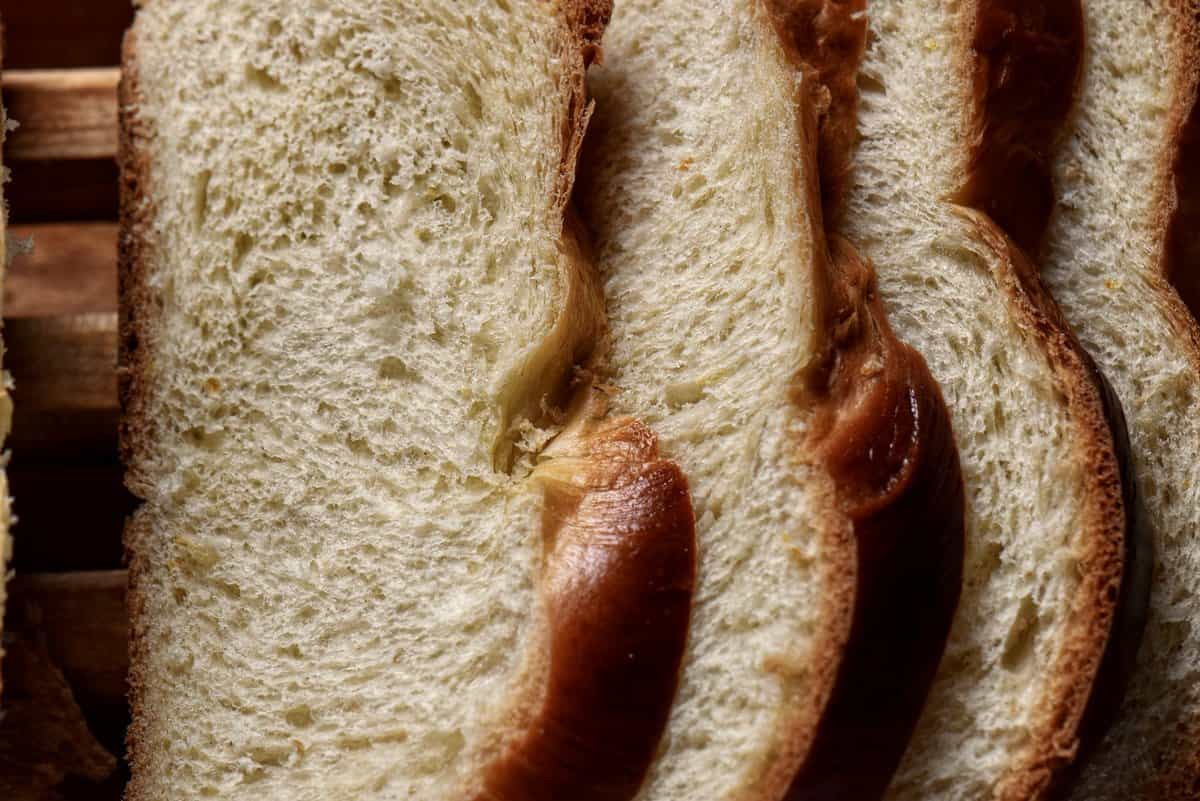
FAQ
You can make the dough the night before and let it rise in the fridge overnight. Allow it to come to room temperature before deflating. Follow recipe details for shaping the dough into loaves in the morning.
Make sure to pinch the ends of the loaf well before baking and tuck the ends under. This will help secure the braids so they don’t come undone during baking.
Wrap any leftover bread in plastic wrap or place it in a zip-top bag and store it at room temperature for up to two days. Beyond that, the bread will start to dry out. You can also freeze the bread for up to three months. Simply place in a freezer bag, date and freeze.
Most people know that Italian Easter bread is a delicious sweet yeast bread that is often braided and decorated with 5 colored eggs. I kept its authentic nature for this particular recipe and made it without the eggs. Feel free to include them if you like.
There are a few reasons why sweet bread can come out dry. One reason is over-baking the bread. As all ovens heat a little differently, be sure to check the bread at the 40-minute mark. If using a thermometer, it should read 190°F to 195 °F (87°C- 91 °C).
Another reason is using too much flour when kneading the dough. When you are adding the flour, do so gradually and only add enough to make a soft dough.
This Easter egg bread is best enjoyed the same day it is made and tends to dry out quickly.
Italian Easter recipes
Recipe Origins
When a colleague of mine, Fabiana, learned of my yeast obsession, she was generous enough to share her family’s recipe for this sweet Italian Easter bread with me. It’s been part of my Easter festivities ever since.
My friend’s mom was born in Ururi. This is a small town in the province of Campobasso, in the Italian region of Molise. I learned that Albanian refugees migrated following the Balkans’ invasion in the 15th century by the Ottoman Empire.
Ururi was one of the places where these uprooted Albanians settled in. I can’t help but wonder if this recipe, which, according to Fabiana, was always referred to as poprati, was influenced by the Arbëreshë people.
The original recipe said, with regards to flour, to use quanto basta – which essentially means to use as much flour as the mixture will absorb.
If you think that a description like that in a recipe is super vague and unhelpful, you are not alone. These two words have haunted so many of us trying to recapture and honor our families’ recipes. But we are a resilient group as we continue to bake and document as best as we can.
I want to mention that Fabiana’s original recipe used 1½ cups of sugar. I reduced it to 1 cup. That’s the beauty of recipes, and you can adapt to your own preferences.
Lina’s delicious bread for Easter…also referred to as Pane di Pasqua… I absolutely love it!
Thank you, Fabiana, for sharing your mom’s poprati.
For an authentic Italian experience during this Easter season, be sure to check out more delicious recipes from our Easter category.
★★★★★ If you have made this traditional Italian Easter bread, I would love to hear about it in the comments below and be sure to rate the recipe!
Recipe
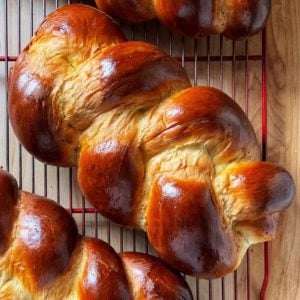
Italian Easter Sweet Bread Recipe: Pane di Pasqua
WANT TO SAVE THIS RECIPE?
Ingredients
Yeast mixture:
- 8 grams active dry yeast 1 package or 2¼ teaspoons
- 1 cup milk lukewarm
- 1 tablespoon sugar granulated
Orange sugar:
- 1 cup sugar granulated
- zest of one orange
Dough ingredients:
- 5 eggs room temperature
- ½ cup vegetable oil
- 1 teaspoon vanilla extract
- 1½ cups russet potato about 2 medium, peeled, boiled and riced, about 225 grams
- 1000 grams flour all-purpose, sifted, about 7 cups
Egg wash:
- 1 egg slightly beaten
- 1 tablespoon milk
Instructions
Dissolve the yeast:
- Dissolve yeast in warm milk. Add 1 tablespoon of sugar and stir. Set aside for 10 minutes.NOTE: If you do not see any foam after 10 minutes, your yeast is likely inactive and you'll need to start over with fresh yeast.
Make the orange sugar:
- Combine 1 cup of granulated sugar and the zest of one orange in a small bowl. Using your fingertips, rub them together in a circular motion for a couple of minutes. Notice how the sugar undergoes a color and aroma change as it absorbs the oils from the orange. Set aside for now.
Assembling the dough:
- In a large mixing bowl of a stand mixer, whisk the eggs at medium speed until they are nice and frothy, about 3-4 minutes.
- Gradually add the orange sugar. Continue to whisk for another 3-4 minutes.
- Whisk in the oil and the pure vanilla extract on low speed.
- In a small bowl, whisk together the riced potatoes and the yeast mixture. This will create a slurry.
- With the mixer on low speed, slowly add the yeast slurry. Whisk together for one minute.
- On low speed, add about ⅓-½ of the sifted flour. Whisk together for 1 minute.
- Scrape down the sides of the bowl.
- Switch to the dough hook attachment.
- Add the rest of the flour and knead for 8-10 minutes until smooth and elastic. The dough should pull away from the sides of the bowl, but it should be sticking to the bottom. To test the dough consistency, press your finger lightly into the dough. It should be soft and slightly tacky to the touch.
- Place the dough in a lightly oiled bowl. Make sure to give the dough a good turn while coating it with oil. Cover the bowl with plastic wrap.
- Allow the dough to rise in a warm place, draft-free, for about 1 hour or until double in size.
- After the first rise gently deflate it by punching and pressing down. Cover and allow it to rest for an additional 30 minutes.
- Meanwhile, line a large baking sheet with parchment paper. Set aside.
How to braid the dough and form three loaves:
- Press down on the dough once more to deflate it again.
- Transfer the dough to a clean work surface and divide it into three equal parts (use a kitchen scale if you have one).
- Cover each ball of dough loosely with plastic wrap to prevent them from drying out.
- Working with one ball of dough at a time, use a kitchen scale to divide it into three equal pieces and cover loosely with plastic cling wrap.
- Then, taking one piece at a time, knead it briefly for 15 seconds then roll it out into a long rope that is about 10 inches long and 1½ inch thick. Make sure that the ropes are even in thickness so that they will braid evenly.
- Braid the three ropes together by intertwining one over the other two. Tuck the end underneath and pinch it to secure.
- Transfer to a parchment-lined baking sheet. Cover loosely with plastic film.
- Repeat braiding with the other two balls of dough.
- Cover with a clean kitchen towel and let rise until almost double in size, 45 minutes. The dough should spring back lightly if you poke it with your knuckles.
Baking the bread:
- Adjust the oven rack to the middle position and preheat the oven to 350°F (180°C).
- When the dough is ready, brush the entire surface lightly with the egg wash (1 large egg beaten with 1 tablespoon of milk) using a pastry brush. This will give the bread a nice, glossy finish.
- Bake for 45-50 minutes or until deep golden brown. Depending on your oven, you might want to place a sheet of aluminum paper loosely over the loaves, to prevent them from over-browning.
- The bread should sound hollow when tapped on the bottom. Remove them from the oven and let them cool completely on a wire rack before slicing and serving.
Video
Notes
- The serving size is calculated as 1 loaf.
- Each baked loaf is approximately 10-11 inches long and yields 20 slices cut ½-inch thick.
- Check the expiration date on the yeast and test it to see if it’s still viable.
- Have the eggs at room temperature for simpler mixing. This includes the egg used for the egg wash.
- Use russet potatoes because they have a high starch content and yield a fluffy texture in the bread.
- The most precise technique to measure flour is by weight. If you don’t have a kitchen scale, fluff your flour and then scoop it using a dry measuring cup and level it off with the back of a knife. For reference, 1 cup of all-purpose flour = 142 grams [source].
- There’s no need to flour your wooden board since you want the dough to adhere to it while rolling and shaping the logs. You can prevent the soft dough from sticking to your hands by dusting your palms with flour.
- This sweet braided Easter bread is best if served the same day they are made. As with most sweet yeast bread, they dry out quickly.
Nutrition
I originally published this post on April 1, 2015, and republished on March 28, 2022, and again on March 21, 2025, with updated content. Thanks for sharing!
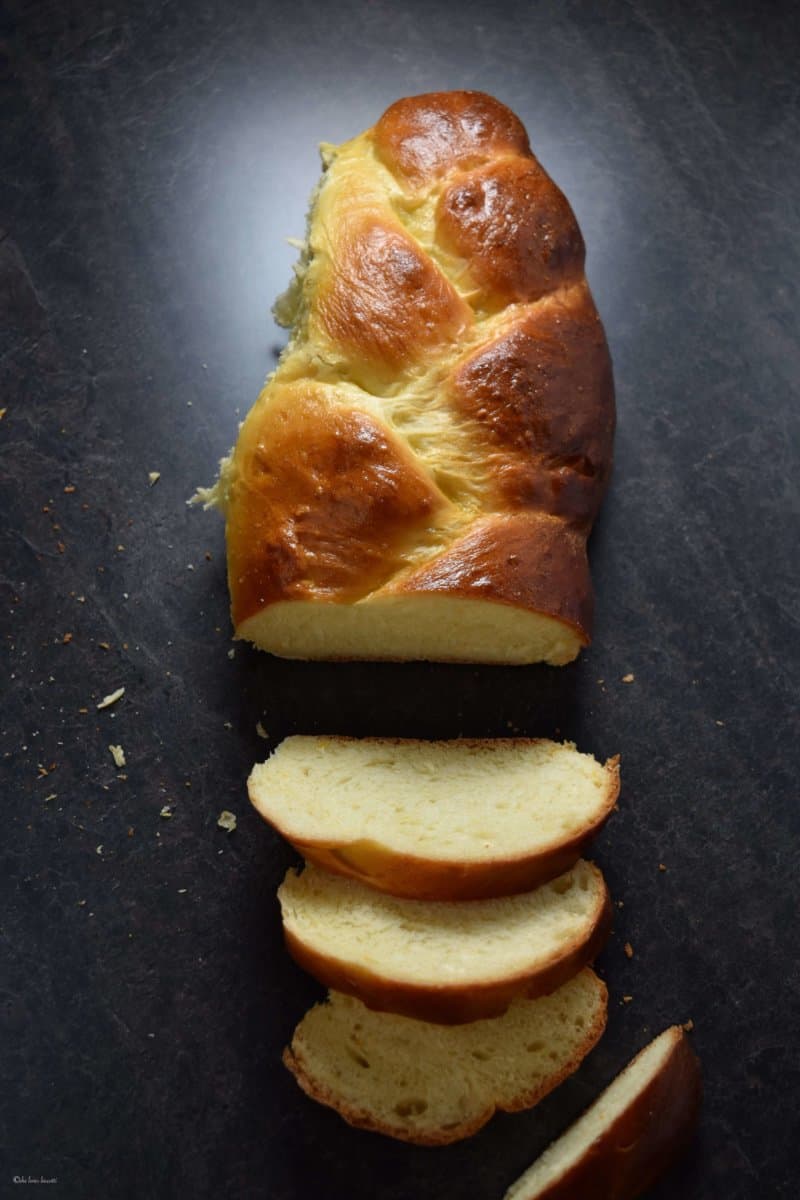



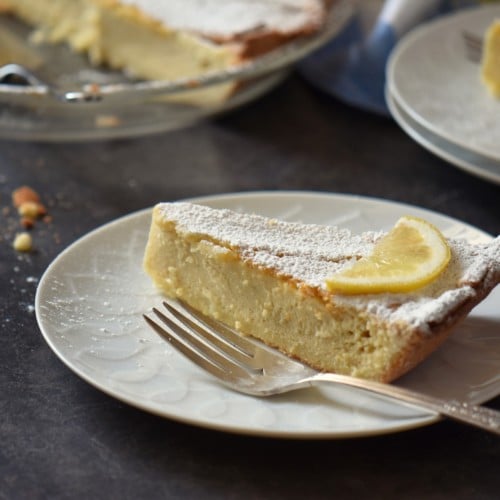
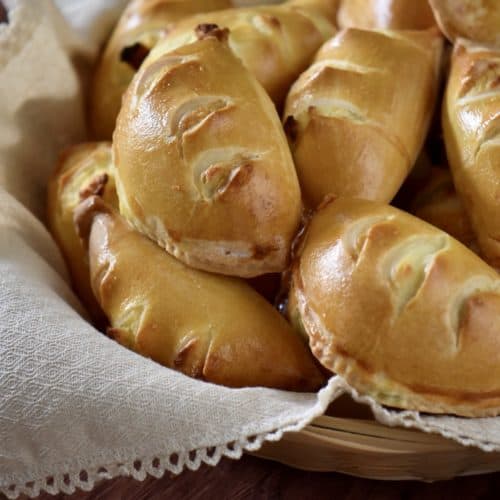
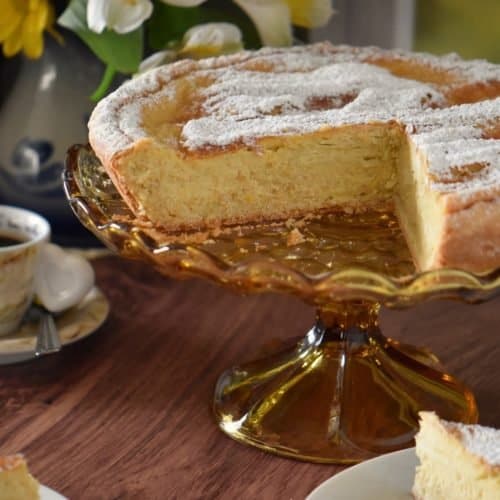
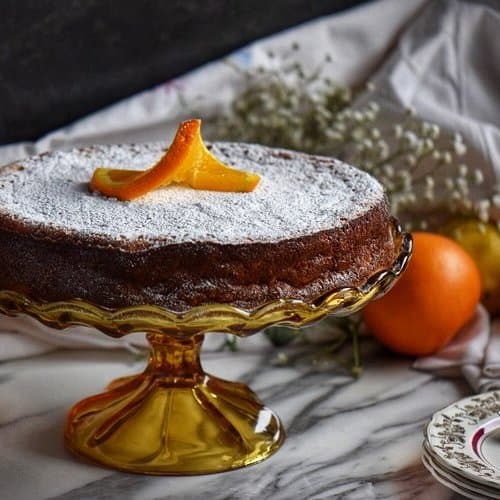
Franca
Made this for Easter delicious and easy to make
Maria
Thanks so much for taking the time to share Franca! Buona Pasqua!
Shelly Tancini
Hi Maria,
I can’t wait to make your Easter Bread. I have always used my Gram’s recipe but I think the riced potatoes would add some softness to it. My daughter is sensitive to milk could I use Almond, Oat, Rice, or Coconut milk instead of whole milk?
Maria
Thanks for your interest Shelly. Yes, it should be fine with almond milk. Enjoy!
Michelina
Hi Maria. My loaves are in the oven the house smells heavenly can’t wait to try them. Thank you for sharing
Maria
So thrilled to read this! Thank you for sharing Michelina. Happy Easter!
Jess
Hi Maria!
Do you think you can make these into smaller maybe individual sized loaves and just adjust baking time accordingly?
Maria
Thanks for your interest Jess. Yes, you can absolutely make these into smaller individual-sized loaves! As you mentioned, keep an eye on the baking time—it will likely be shorter depending on the size of the loaves. I’d start checking around the 20-25 minute mark and look for a golden-brown color and a hollow sound when tapped on the bottom. Enjoy!
Claudia
Thank you so much! I made it into loaves – amazing so soft and spongy.
Maria
My pleasure Claudia! Thanks so much for sharing ♥
Maria
Hi Maria,
Can you make it ahead of time and freeze for Easter Sunday?
Thank you very much.
I love your recipes.
Maria
Hi Maria! Thanks for your interest and support. Yes, the bread freezes well. Enjoy!
Cathy Aparo
Hi Maria,
My grandma used to make this at Easter with the eggs on top. You have brought back a flood of memories with this recipe. My family who used to make it, too have all passed away and no one shared their recipe. So now, I can make this bread for my friends. Thanks for sharing this with us.
God bless you.
Maria
Thank you so much for your heartfelt message Cathy. I’m so touched to hear that this recipe brought back such cherished memories of your grandmother and family. It’s truly special that you can now carry on the tradition and share it with your friends. Wishing you many joyful moments as you bake and remember your loved ones. God bless you!
Elena
Happy Easter to You 🐣
A great recipe !! Love making this traditional bread 💕
Maria
Thanks so much Elena! Happy Easter ♥
Diane Galambos
Hi Maria! Have you ever done half of this recipe? Hugs Diane/@kitchenblissca
Maria
Hi Diane! I have not but I am sure you can make it happen! Thanks so much for stopping by! Enjoy!
Emilia Solitiero
Hello Maria, how much in advance can I make them ? Can I bake them 3 or 4 days before? I would like to gift them but I want to make sure they are fresh when I do .. should they be wrapped well ?
Maria
Thanks for your interest Emilia. I actually prefer to bake them the week leading to Easter and freeze them—that way they stay super fresh. Once they’re completely cooled, wrap each one tightly in plastic wrap and then again in foil or place them in a freezer-safe bag. When you’re ready to gift them, just take them out the night before and let them thaw at room temperature (still wrapped). They’ll taste just like freshly baked! Happy Easter!
Carmela
Hi Maria, than you do much for the recipe . If I want to cut this recipe in half , should I use 3 eggs or 2?
Maria
I would go with 3… you may need to adjust the amount of flour… it should be soft and just a little tacky… not sticky. Have fun!
Vilma
Love your recipes. Have been making this sweet bread for several years. Turns out amazing every time. It’s exactly as my mom would make it. Thank you for sharing this and all your other recipes.
Maria
My pleasure Vilma!
Ray
What if you don’t want to use potatoes
Maria
Thanks for your interest Ray. The ratio of flour to liquids would have to be tested and adjusted. Thanks for stopping by.